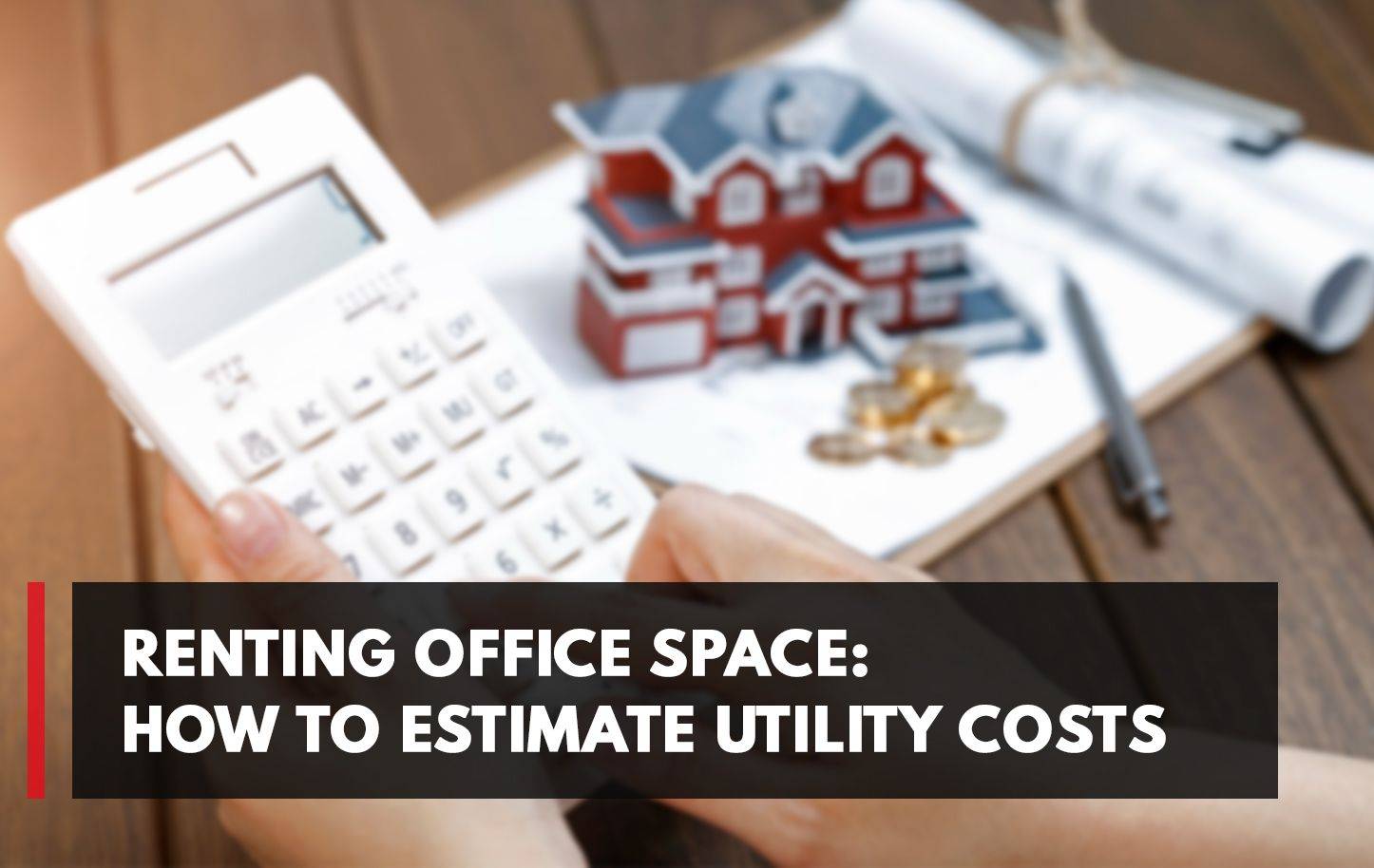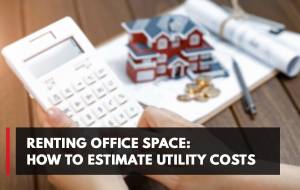
Renting office space: How to estimate utility costs
Published At: Wed, 06/30/2021 - 11:06
Many business owners spend day and night searching for their dream office space for rent. There are many reasons why this is oftentimes a difficult and time consuming choice to make.
There are several factors that businesses should consider when looking for a space - from parking availability to its curb appeal. The prospecting gets even more complex when you consider perhaps the most important factor: how much it really costs.
The majority of businesses determine their budget for office rent early on in the process and start searching for their ideal office space with that in mind. However, it’s not uncommon to incur additional associated costs and expenses like utilities, aside from the monthly base rent. As a commercial lessee, you should account for these expenses in your budget.
This article guides you through the importance of including the utility costs in your office space lease budget. Though monthly utility usage will vary from one business to the next, here you’ll find some valuable tips on how to figure your utility costs.
What are utility costs
Utility costs are the money you spend on all the resources necessary to operate your business such as electricity, gas, water, etc. Utility usage is constant, therefore you can expect consistent and permanent expenses that you will be responsible for, just like you would at a residential rental. On the plus side, incorporating some energy-saving, water-saving, or other behavioral patterns within your company may help reduce usage or your service provider may offer some sort of rebates.
However, not all businesses will benefit from the same. Unlike houses, most office buildings need to maintain a certain level of utility usage. For example, before employees even enter their office, the building itself is already powered on, providing lighting, clean water, and heat and ventilation somewhere. In addition, it’s become a widely adopted corporate culture to require 24/7 accessibility, where employees can work at any time they wish. In that case, the utility costs are higher.
Main types of utility costs
Electricity
Electricity is one of the main utilities for commercial buildings as it’s also likely the most expensive, as there are numerous fixed parts of the building that use energy all day long, like lighting, ventilation, and HVAC systems. Don’t forget about the usage of computers, office appliances, entertainment systems, chargers for gadgets, and other technology connected to electricity all the time. So, make sure you do not overlook this crucial utility when determining your monthly rent expenses.
To start, statistics show that the average commercial building’s workers spend less than $1,3 energy per square feet of the office in the US.
Natural Gas
This utility cost can be significantly cheaper during different seasons of the year. For instance, some states experience a clear distinction between warm and cold weather seasons. Here, you have an excellent opportunity to save on natural gas in the warmer months, while cranking up the usage in the cold seasons. Statistics show that more than 80% of Natural Gas consumption goes to heating systems. The other usages include cooking, water heating, etc.
Usually, larger buildings in the U.S. use around 20 kilowatt-hours of natural gas -- larger meaning over 100,000 square feet. That is a good size to consider for an office building with multiple large office suites. Of course, you may have an office space with less square footage, though you can consider the mentioned statistics for calculating projected natural gas consumption.
Water
Water consumption is relatively more consistent than all other utility costs, as it is based on human biological needs and not on the climate, office location, size, etc. The average U.S. person uses 80-100 gallons of water per day for various reasons. This can help you understand the water reserve needed for you based on the number of your employees.
Those are the main types of commercial utility expenses and they are generally most associated with electricity and HVAC systems. Aside from that, there are also TV and Internet expenses, which are largely utilized in offices. However, these additional utilities are sometimes inclusive in your base rent price, or are widely accepted as a standard living expense so there is no specific emphasis on it.
How to calculate utility costs
Calculation or an estimate of utility usage and costs is relatively easy if you have had experience with covering an electricity bill for your company before. If this is your first commercial venture, you just multiply the above-mentioned estimates for utility use to the number of employees or the size of the office. This will give you an approximate picture of the utility use volumes specifically for your company. Later, multiply that number by your local utility rates to have the utility budget estimate for your business. Once you’re up and running, it’s essential to record and understand all your company expenses.
Later, if you find a need for a new office for rent, you’ll have an understanding of the costs for covering utility expenses. This way, you can account for those expenses in addition to the base rent and have a clearer picture of the kinds of costs that you will face when renting an office.
As utility rates differ between cities, it would be very beneficial to call your local utility providers for estimates of rates in the area that you are considering for a business location. Additionally, many cities are readily available with data on average annual usages, average costs, etc .
When you’re ready to search for an office space, head to My Perfect Workplace, where you can find available office space near me and get started with your next business venture.


